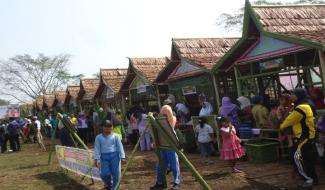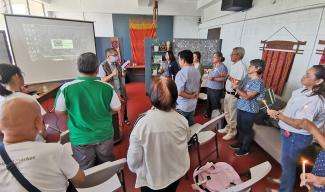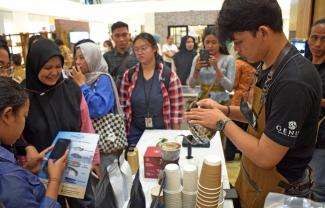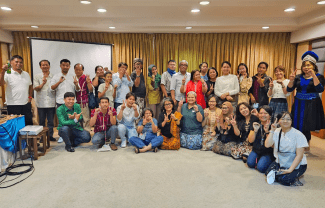The Sago Festival in Sungai Tohor Village in Riau's Tebing Tinggi Timur District took place over a period of 11 days in late January.
Intended to promote the cultural and social life surrounding sago production, the festival showcased sago cuisine in a cooking competition, cultural seminars, and a photo contest. The villagers of Sungai Tohor along with Peat County Community Network (JMGR) and WALHI Riau organized the festival.
The initiative sought to improve public awareness about the culture of sago production and the array of products that are derived from it. Dances, chants, and rituals relating to sago harvesting were performed though they are no longer regularly practiced owing to the advance of modern lifestyles and economic pressures.
The event brought attention to the open land system involved in sago rituals, and treated festival goers to hymns describing the sublime beatify of the harmony between man and nature.
Residents demonstrated how the sago processing industry could increase prosperity in these rural areas. Festival organizers hoped to encourage the public to play an active role in preserving the peat forest ecosystems where sago is cultivated.
Sago Livelihoods Under Threat
Since the early 1950s, sago is the main food aside from corn and potatoes that residents of Sungai Tohor cultivate. Sago is produced from sago palm trees. The palm tree leaves are used to build the roofs of houses. The sweet and sour palm fruit is highly favored by the community for its nice taste and high nutrition value.
Sago palm trees are abundant because of the primary peat forest ecosystem. In the 1970s, the government began to open this ecosystem to logging companies to exploit the timber resources. Peasant farmers, as a result, became co-opted into this industry.
The economic value of sago palm trees rose sharply in 2001 when demand from Malaysia increased. Middlemen from Selat Panjang in the Meranti Islands regency accelerated the sago production process and developed the processing industry. Since that time, people here have relied on sago production as a major source of income, and the source of funds to cover expenses like school fees.
"I have two acres of sago and was able to send my children to school [on the earnings]," said one resident.
But then the economic activities of companies in Sungai Tohor changed the peat forest ecosystem in Tebing Tinggi Island. Salt water entering the ecosystem thru a newly constructed canal damaged dozens of hectares of sago palm trees. The growth of the trees became stunted, buds stopped emerging, then the trees died.
In the absence of a sea water retention dam, the trees began to feel the impacts of the canal since 2006. The situation deteriorated in 2009 when the company, PT Lestari Unggul Makmur, built a 10 km long canal that was 7 meters wide and 5 meters in depth. Another company, PT Nasional Sago Prima, developed an industrial plantation forest (HTI) on 21,000 hectares of land. The community demonstrated against the activities of both companies.
Community leaders joined with activists from Environmental Forum (WALHI) Riau to raise public awareness through campaigns to recognize the importance of sago economy and culture in the society.
Currently there are 12 sago processing facilities with a capacity of 120 tons of wet sago every 15 working days. The trunk of the sago palm is processed into wet sago that is ready for export to Malaysia and Cirebon. Theer are also more than 10 small-scale household industries making various snacks from dried sago.




